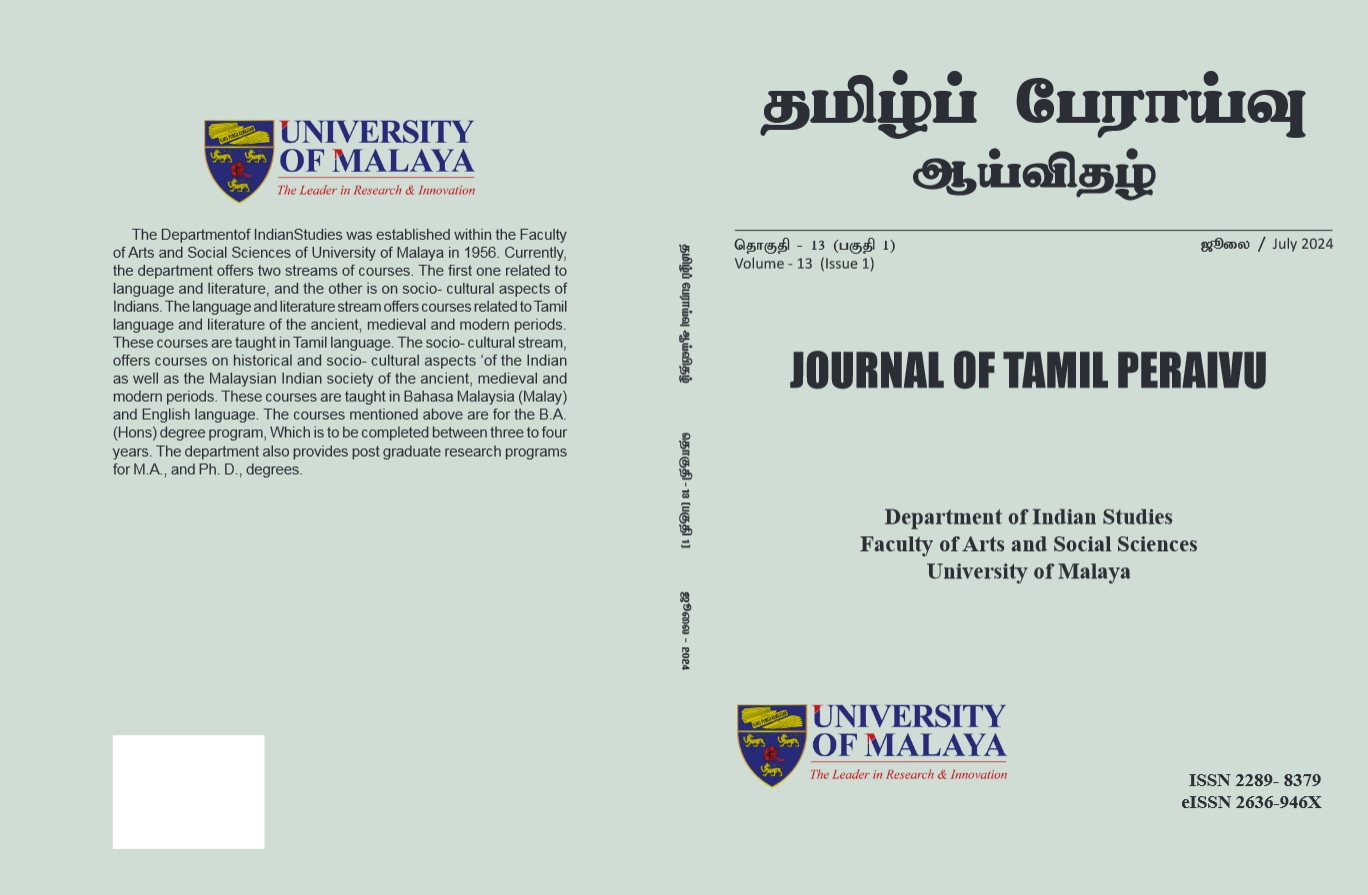விறலி - கலைநிகழ்த்தலும் வரலாறும் (Virali – Performance and History)
DOI:
https://doi.org/10.22452/JTP.vol13no1.11Keywords:
Ethnic Community, Performative Art Tradition, Professional Artists, Exile, Viraliyar, Tolkāppiyam, Porulāṭikāram, Tamil Artistry, Cultural Dynamics, Aesthetics, Viraliyar's Diplomatic Role or MessageAbstract
The ancient Tamil grammar text Tolkāppiyam, particularly through its Porulāṭikāram section, provides valuable insights into the societal structure, cultural practices, and artistic expressions of early Tamil civilization. This research focuses on the diverse artistic and cultural contributions of various groups identified within the text, with a specific emphasis on the Viraliyar. Unlike other artists categorized as Kuthar, Panar, and Porunar, the Viraliyar possessed unique roles and characteristics that warrant detailed examination. The Viraliyar are distinct in their artistic expressions, which include singing, dancing, or both, and played a significant role in both the external and internal domains of leadership. Externally, they were involved in the battlefield, aligning their talents with the leaders' military endeavors. Internally, their understanding of leaders' psychology enabled them to act as mediators and conflict resolvers, highlighting their integral role in maintaining social harmony and guiding leaders through personal and political challenges. This study explores how the Viraliyar transitioned from their traditional artistic roles to other societal functions in later periods, reflecting broader shifts in social and cultural dynamics. By examining the Viraliyar’s contributions and their evolution, the research aims to provide a comprehensive understanding of the lifestyle and cultural activities of this historically significant art community. This analysis not only sheds light on the role of the Viraliyar within Tamil society but also contributes to the broader discourse on the development of cultural practices and artistic expressions in ancient Tamil Nadu.



